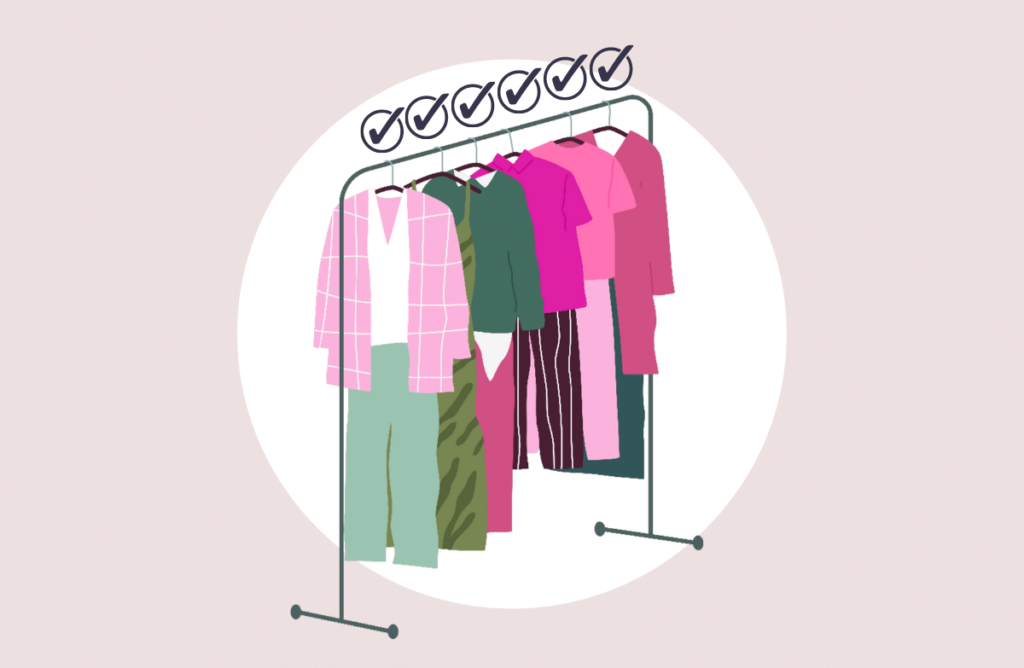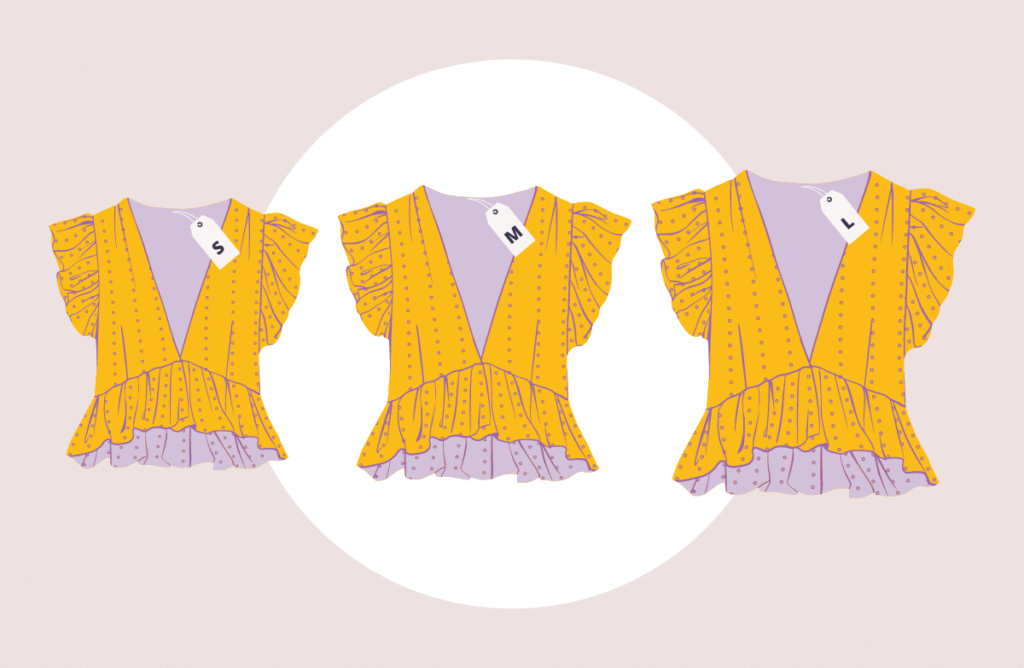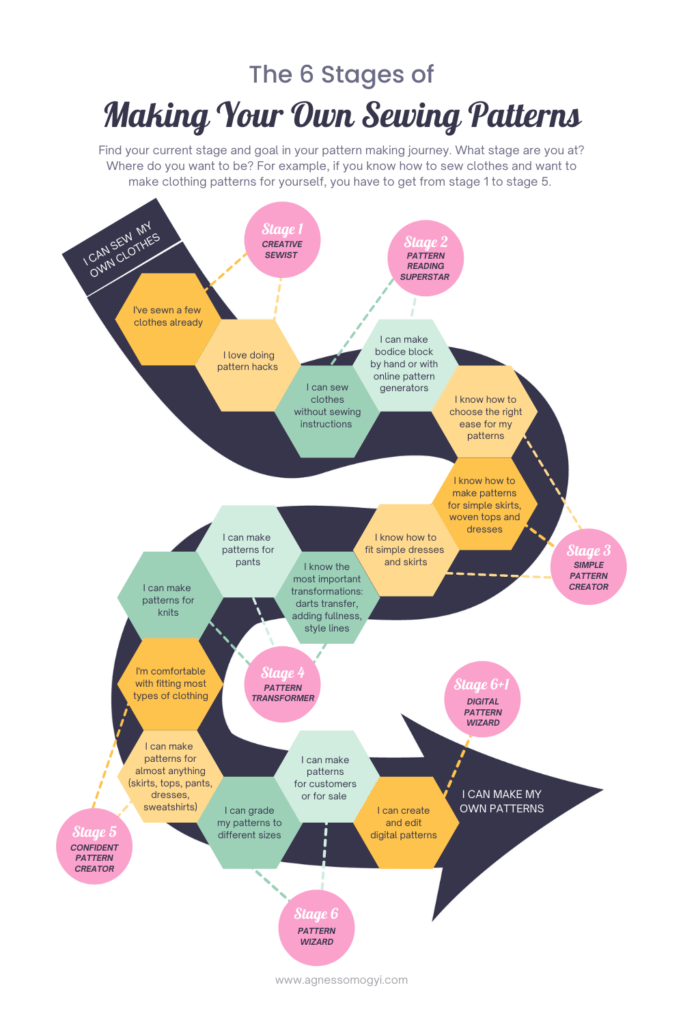
There’s a point where you feel comfortable sewing your own clothes with patterns downloaded from the internet and it’s finally time to start making your own patterns. This idea may be intimidating at first, but it is the best way to create clothes that fit better than standard patterns and you have the freedom to create the style you have in mind. There are plenty of tutorials out there on how to draft patterns and it can be overwhelming to try to find the right way.
However, there is a learning curve if you follow the right steps, you can learn easily how to make your own sewing patterns from creating basic blocks to fitting and transforming them. If you want to make patterns for yourself or sell the clothes you made with them, you do not need a professional level. Learn what you really need to achieve your goal and don’t bother learning skills you’ll never use. You know what? You can make your own sewing patterns without knowing how to draft a pattern from scratch. Now let’s see those 6 stages of pattern making.
Table of Contents
Stage 1: Creative Sewist
This is the first step in your pattern making journey, when you realize it’s time to get to the next level in your sewing projects.
You are comfortable sewing clothes using standard size patterns
If this is the case, then you are probably used to making clothing in standard sizes that are commonly found in online stores or magazines. However, this is not the case when you make your own sewing patterns. You need to know the difference between standard and custom sizes. You have to know how to create each of them regarding what you want to achieve and how to grade a sewing pattern to get different sizes.
You love pattern hacking
If you’re comfortable with pattern hacking, then you’re probably more than ready to start learning pattern making. You’re anxious to make your own patterns.

Stage 2: Pattern Reading Superstar
This is the second step in your pattern making journey, when you begin to understand how sewing patterns work from a new perspective.
You know the pattern making terminology and symbols
You know the most important pattern making terms. You’re comfortable finding the armscye or the crotch line. You know how notches and grain lines guide you. You know the different types of patterns for different types of clothing.
You know the symbols, what they mean, and how to read them.
You could sew almost anything without sewing instructions
This is an important skill that you need to develop before you begin to draft your own patterns. Being able to sew without instructions means that you will be faster when making your own patterns and you will also be able to solve most of the problems that arise when drafting.
Stage 3: Simple Pattern Creator
This is the third step when you start making your first simple patterns.
You can make simple patterns for woven tops and dresses and skirts
First, you need to get the basics down when drafting your own basic blocks and skirts. You feel comfortable with drafting the pieces, understanding how they are built, and what additional pieces you will need (facings, plackets, waistband and so on). You can make your basic blocks by hand or by using online sewing pattern generators such as Sewist or Tailornova, which makes this step much faster and easier. Read more about these pattern generators here.
You know the importance of ease in sewing patterns
You know how to choose the best ease allowance for your patterns. Ease allowance can make a big change in sewing patterns. Defining the right ease is crucial to get the best result.
You know how to fit sewing patterns
At this point, you start to know your body type and how to make your first pattern fit. This step is important because they will often face the same adjustment problems and you will make fitting much more effectively in the future.
Stage 4: Pattern Transformer
At this stage, you begin to experiment your capability to create clothes that no one else has.
You know the most important sewing pattern transformation techniques
Now you know how to alter patterns. There are a lot of techniques and you need to know what works best for you. You must be able to transform patterns to create your own designs from scratch. You can add parts to a pattern and know which areas need to be changed for each design you want to create. You can do dart manipulations, create style lines and add fullness.

Stage 5: Confident Pattern Creator
At this stage you can make patterns for more complicated clothes as well as pants or clothes made of knit fabrics.
You can make patterns for pants
You know how to make patterns for pants. You understand construction and how to create different styles. If you’re using online pattern making tools you know which one to use for different styles of pants. You know how to adjust the patterns to your shape, and how to change the crotch angle and length of the crotch if necessary for a better fit.
You can make patterns for knits
You are familiar with sewing patterns for knitted fabrics and their characteristics. You know what is the best online tool for knits and how to customize them to fit perfectly.

Stage 6: Pattern Wizard
You are comfortable creating any pattern you want
This is when you begin to feel confident in making your own patterns. You are able to create designs similar to those you see in stores or on social media and be able to create almost any pattern you want. You are also able to create patterns with a more custom fit so that you or your customer will have a better fit and look better on your clothes.
You know how to grade a sewing pattern to get different sizes
Now you can not only make patterns, but even know the sewing pattern grading basics and can create different sizes of them. You know the basic grading rules and how to adapt them to the best result.
Stage 6+1: Digital Pattern Wizard
You know how to share your own patterns with the world.
You know how to work with your patterns digitally
You have the skills to make your own patterns with confidence and are ready to share them. You know at least one way to digitally edit or create patterns digitally and how to deliver them. This can be a PDF sewing pattern or a document created with specialized software for pattern making.
Conclusion
Reaching all these skills requires time and exercise, but if you are persistent and ready to learn, you can successfully make your own sewing patterns. It will take a little trial and error, but with a little perseverance and a good dose of patience, you will get there.
You may not be interested in making patterns in different sizes, but do you want all the skills to make any type of clothes for yourself? All you have to do is get to Stage 5. Do you just want to make simple dresses and blouses? In Stage 3, you have everything you need. Choose the path that best suits you. Click the image below and download the map of the 6 Stages of Making Your own Sewing Patterns.

When you get the right orientation, the whole process will be clear and actionable and you will become from a Creative Sewist to a Pattern Wizard. If you feel like you would join a community to share this journey with fellow creative sewists check out the Buddy Positive Pattern Program, where you can learn everything that is covered above.
Subscribe below if you don’t want to miss any of our posts on how to make your own sewing patterns.
